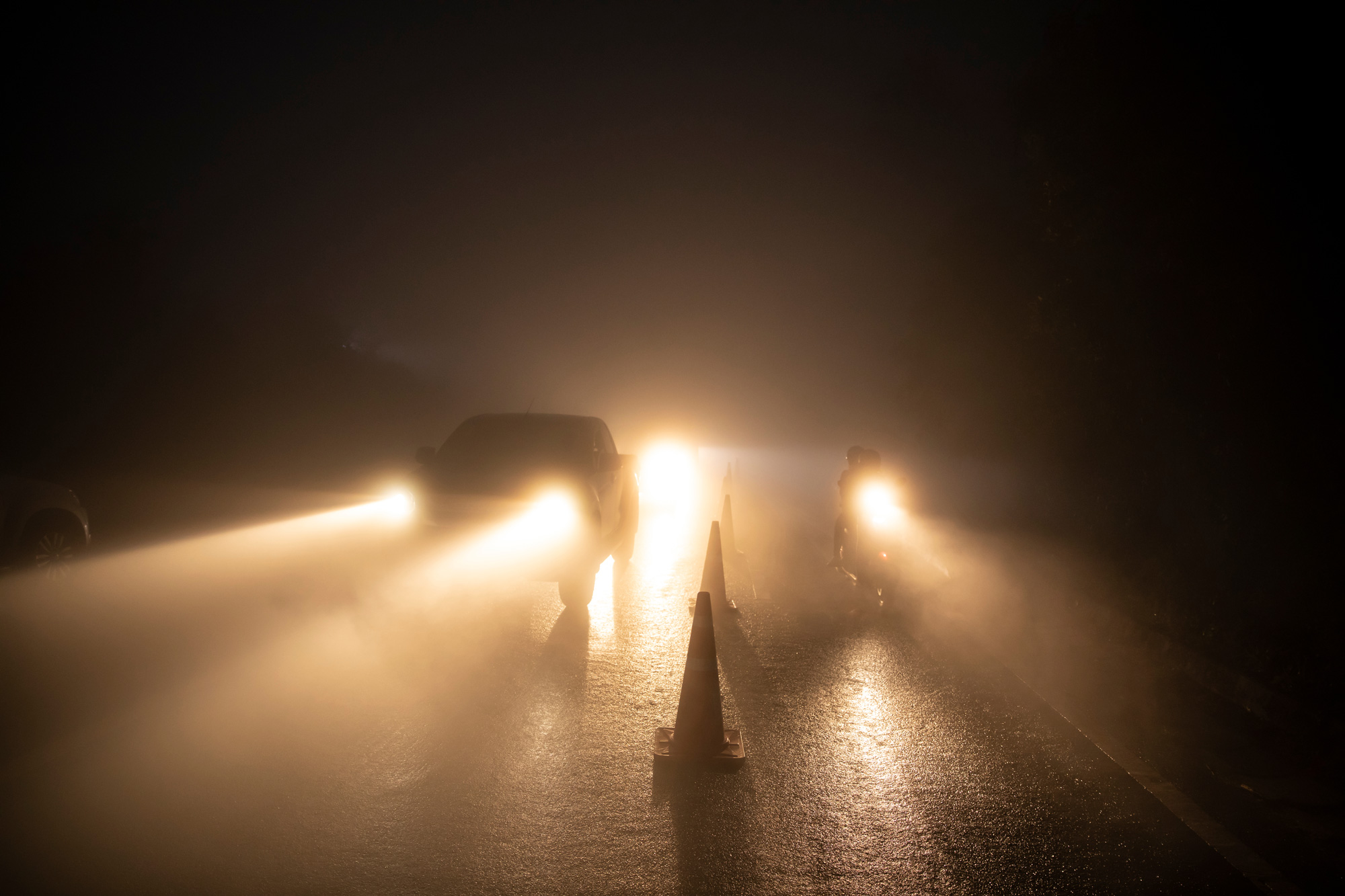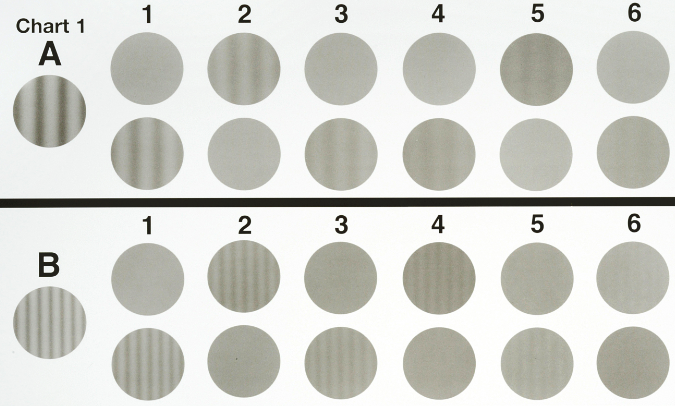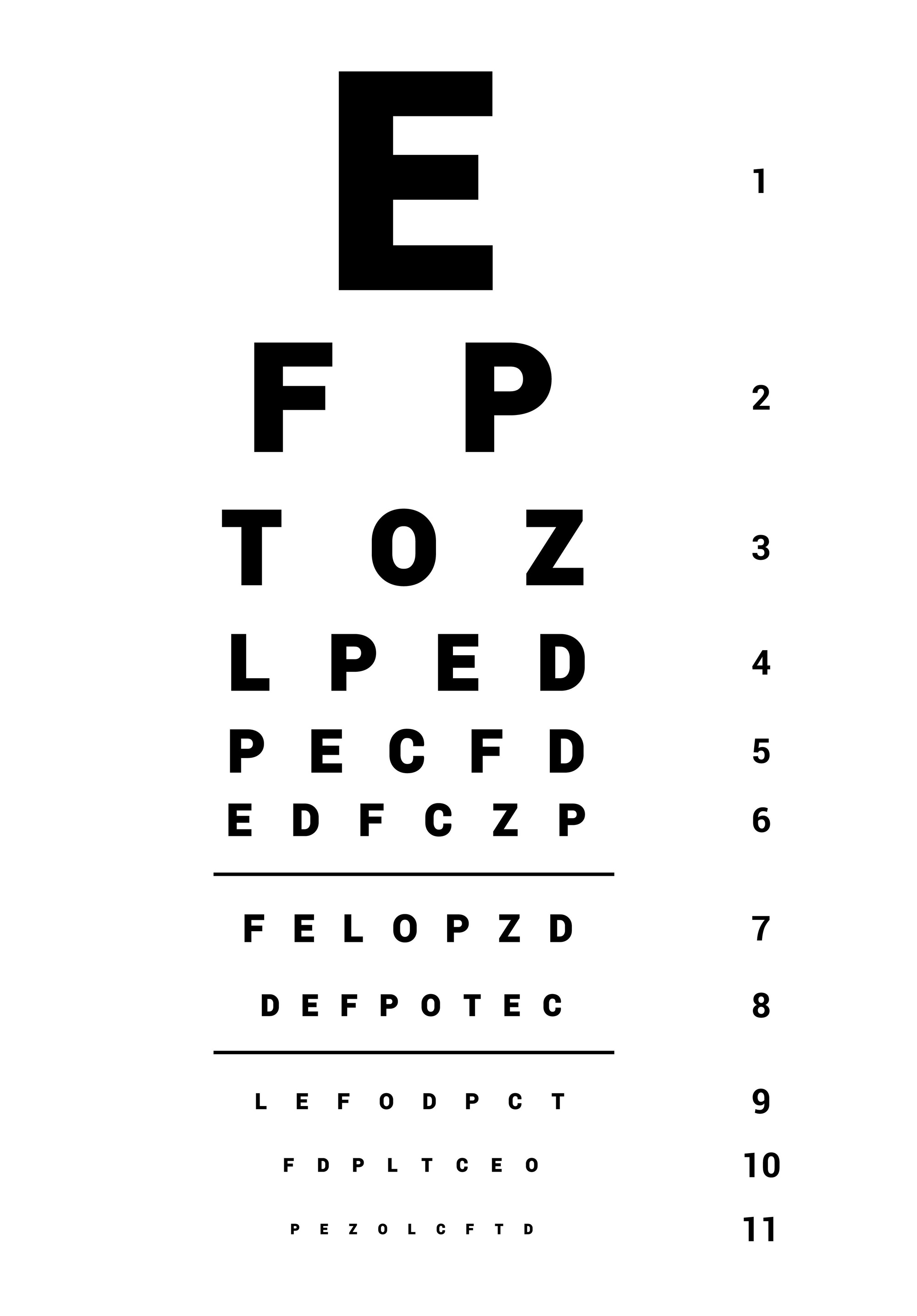Contrast Sensitivity and Driving

Contrast sensitivity is a measure of how well people can see in low-contrast lighting situations, including the lighting experienced at dawn, in fog, when glare is present, and at night. Contrast sensitivity is very important for drivers.
Contrast sensitivity tests assess vision by displaying specific images under low contrast. The most accurate type of image used for testing is called a grating, which is a series of bar patterns. Various sizes of bar patterns are displayed across a range of contrast levels, and the patient is asked to determine which bars are visible and which ones cannot be seen. When patients or drivers have poor contrast sensitivity, many of the bars are invisible on the test, showing that the driver, or patient, has poor or low contrast sensitivity.

How Is Contrast Sensitivity Different from Acuity?

Visual acuity testing, or the” Big-E” chart, is designed to test under high-contrast conditions. This test displays a series of letters, all of which are black letters on a white background. The patient is asked to read the chart starting with the largest letters and ending at the smallest letters that can be correctly identified.
Unfortunately, having good visual acuity on the Big E chart does not necessarily equate to good vision while driving. To be a good driver, the driver needs to see well under low contrast conditions and perform tasks such as detect low contrast objects on a dark road, see through oncoming headlights that create glare, correctly identify dimly lit road signs and many other driving requirements that do not involve high-contrast black-and-white viewing conditions. For this reason, a number of studies have shown that visual acuity is not a good predictor of driving performance and safety, while contrast sensitivity is a good predictor.
Studies Supporting Contrast Sensitivity for Evaluation of Drivers
A number of studies over the last 20 to 30 years have shown that contrast sensitivity is a very good predictor of driver visual performance, while visual acuity is not a good predictor. One of the first studies, published in 1983 (Evans and Ginsburg), showed that drivers who have difficulty identifying highway signs at night, also have poor contrast sensitivity.
Interestingly, the study also noted that visual acuity had little relationship to how drivers were able to see at night. Specifically, two drivers with the same acuity, for example 20/25, could have very different contrast sensitivity scores and very different ability to identify highway signs at night. This study used two different highway signs for two corresponding types of intersections: a “cross” sign and a “T” sign. Drivers were asked to identify which sign was displayed, the “cross” or the “T.” This type of task is obviously very important because a “T” intersection poses much less risk of an accident than a “Cross” intersection. The study data showed that contrast sensitivity predicted which drivers were able to answer the question correctly, for a given viewing distance. Visual acuity could not predict which drivers would identify the signs under these low-contrast conditions.
Contrast Sensitivity and Auto Accidents
The above study shows that contrast sensitivity is an important metric to evaluate vehicle operator visual performance. Cynthia Owsley and her team at University of Alabama at Birmingham took this analysis one step further to determine the association between contrast sensitivity and safety. They conducted a study to determine the level of crash involvement for drivers with poor contrast sensitivity. Their results were stunning, showing that contrast sensitivity testing is an excellent predictor of driver crash involvement. A summary of the conclusion is shown below.
Crash-involved drivers are 6 times more likely to have contrast sensitivity impairment in both eyes than crash-free drivers.
Summary of findings by Owsley et al.The researchers specifically noted:
“A severe contrast sensitivity deficit in only 1 eye was still significantly associated with crash involvement.”
In a more recent study, Prof Owsley and her team used the naturalistic driving technique to accurately measure the association between contrast sensitivity and crash involvement. During naturalistic driving, instrumentation is placed in the vehicles of the participants so that the incidence of crashes and near crashes can be directly recorded while the person is driving in their natural settings. Their study confirmed the results of the earlier study in that people with low contrast sensitivity are more likely to be involved in auto accidents. The results stated:
“Visual functions associated with crash and near-crash involvement included impaired contrast sensitivity….”– Owsley et al 2021
These results indicate that if a driver has a vision problem, it is very important for him or her to receive a test for contrast sensitivity in order to ensure good driving vision and better safety. Importantly, a significant contrast sensitivity reduction in only one eye can increase the risk of crash involvement. As such each eye should be tested individually during the examination.
Contrast Sensitivity and Professional Drivers and Pilots

Many professional vehicle operators are required to drive or fly under low-contrast conditions. Examples include truck drivers, train engineers, and commercial pilots. Typical low-contrast conditions they face include dark roadways at night, train crossings during dusk and early morning, flying under conditions of low ceilings (when the cloud base is close to the ground), and many others.
Many countries now require or recommend the use of contrast sensitivity testing as part of a full examination of professional vehicle operators when a vision problem is detected or the operator scores marginally on the standard vision tests, including visual acuity.

